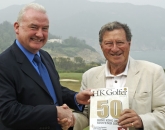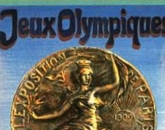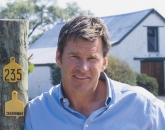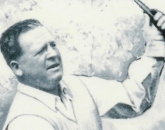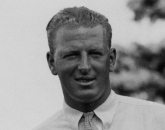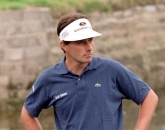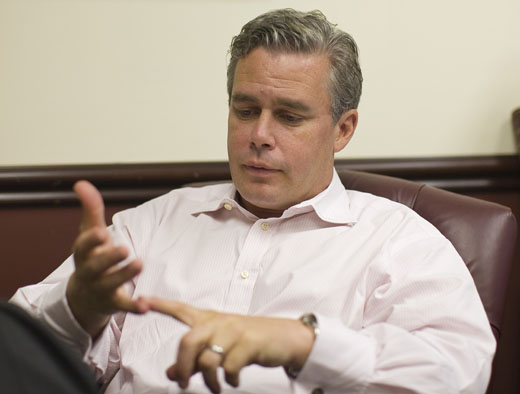 HKG: Supposing golf gets into the Olympics, how would you guarantee that the best players would be there?
HKG: Supposing golf gets into the Olympics, how would you guarantee that the best players would be there?
TV: Well, we have to make it a compelling competition. Tiger Woods and Lorena Ochoa will have 29 chances to win a major championship between now and 2016… they’ll only have one chance to win a gold medal.
To be the first person to win a gold medal in over 112 years of Olympic competition, we think, is something that will be very attractive to the top players.
We’ve structured the field criteria in such a way that it would be the top 15 in the world rankings, regardless of how many from one country, and then no more than two – we may be able to stretch that to three – from any one country beyond that. With two it would give us around 30 countries that would participate. If it were three it would be around 25 who could participate on each of the men’s and the women’s side.
HKG: But if golf doesn’t make it into 2016, they’ll not be a repeat bid for 2020?
TV: Well, I don’t see the opportunity unless they have another sport that gets voted out somehow. The charter is 28 sports and they have 26 for the London Games. That’s how they can create two more sports for the 2016 Games and there’s no assurance that the two that get recommended will get in. They can allow two, one or none.
HKG: What do you think is in golf’s favour?
TV: We think that our values and the culture of our sport is very consistent with and complementary to the Olympic Movement’s. We think the world-wide celebrity of our players, the world-wide distribution of our sport through television, week in week out – golf played at the highest levels is televised in over 200 countries around the world – that would enable us to message the Olympic Movement as an Olympic sport in those telecasts and that’s something that we think would bring new hearts and minds to the Olympics. We also feel that the Olympics would bring new hearts and minds to our sport and develop both.
HKG: Peter Dawson [the chief executive of the R&A] points to the rise in popularity of basketball and tennis, particularly in China and Russia, as a result of those two becoming Olympic sports, and believes that given an Olympic platform, golf will grow too. Do you see that?
TV: I certainly do.
HKG: Where do you see that growth coming from?
TV: I don’t think Golf in Olympics will have a hugely meaningful impact on more developed countries, like the US and UK. I think that where the opportunity really lies is in those countries where golf is just now developing or has yet to gain traction in its development. Countries you could point to would be China, India, Russia, certain parts of Latin and South America, and other parts of Asia. And so, we think that where there is a requirement for government funding or National Olympic Committee resources, there is a requirement that the sport be an Olympic sport. Golf is lacking in those countries in terms of attention, awareness and resources and so we want that to develop. We think that the biggest potential opportunity for growth is to get Golf into the Olympics so that those types of resources, those types of awareness levels can be increased.
HKG: Why has the number of players in the field in both the Men’s and Ladies’ been limited to 60?
TV: There was a concern about the size of the Olympic Games. We felt that holding it to 60 with no cut would make it attractive to the top players to play. We could go to 78, but we felt that to go there we would probably have to go down to rankings in the 300s and 400s to find a player from a country – and that isn’t necessarily a positive. When you look at our competitors, I’m not sure that they have 30 different countries where you could field athletes in softball, baseball, squash or even rugby.
HKG: The format: 72-holes of strokeplay. Any thoughts on structuring the event as a matchplay format? Wouldn’t that be more “Olympian”?
TV: Well, we thought about that; we considered a lot of different formats. We considered matchplay, we considered three days of stroke play then cut down to 32 [players] and go matchplay all the way in for two days. We thought of all that. We’re going to continue working on that.
We took the feedback of the top players. They felt that 72 holes of stroke play is the fairest and best way to identify a champion. Those words were expressed to us by Tiger Woods – along with other top players. They felt that would be best. And then we look at a situation where we want to have a country in it. Golf is unique in that regard. It’s not a 100-yard dash, it’s four days that enables people to move up and to move down and to have an opportunity. The cream will rise to the top, but there is also an opportunity for someone not to shoot themselves out of it on Thursday and then go home,
The other thing that’s interesting: I can’t watch a 72-hole tournament now without focusing on who is finishing second or third. Where do they come from? Who gets silver and who gets bronze? That’s a unique aspect of it that isn’t usually a big topic for discussion in your typical tournament.
HKG: Moving on to international issues: the HSBC Champions, to be played at Sheshan in November, is now a WGC event, with an increased purse of $7 million. As such, it becomes the first PGA Tour-sanctioned stroke play event to be played in China. Is this a signal that there's more to come?
TV: More could be tricky. We have a full schedule right now, so our ability to do more in China will really depend on what events in that time of the year do, and how our strategies evolve. I obviously can’t see us having, say, ten percent of our schedule in China, but I can certainly see some growth, another one or two events in the region, if the opportunity presented itself and we had the ability to do it because of some opening in our schedule. Those openings don’t exist now.
HKG: The perception globally is that the US Tour players aren’t the greatest travelers, with the exception of Tiger, Mickelson and a couple of others. When people have even turned down the Open Championship [Kenny Perry in ’08, Jerry Kelly in ‘09] how do you get players to an event in China?
TV: You’ve just got to make it compelling and attractive. That’s it.
HKG: What about appearance money? It’s rife at events in Asia, although it’s often dressed up as “service fees” or similar. Does the PGA Tour, which prohibits the practice in the States, have any concern of its use at the WGC?
TV: Not a lot. We understand there are certain other arrangements that approach, but don’t go over the bar of the prohibition. However, we feel that with the level of purse that’s there and with the prestige of the WGC generally, the top players will be attracted and want to play.
Olympic Golf – How it would work
The competition format the IGF is recommending if golf is played in the 2016 Summer Games:
- A 72-hole individual stroke play event for both men and women, mirroring the format used in golf’s Major championships. In case of a tie for either first, second or third place, a three-hole playoff is recommended to determine the medal winner(s).
- A field of 60 players for each of the men’s and women’s competition, utilizing the Official World Golf Rankings as a method of determining eligibility. The top 15 world-ranked players would be eligible, regardless of the number of players from a given country. Beyond the top 15, players would be eligible based on world ranking, with two (maybe three) players from each country that does not already have two or more players among the top 15.
Click here to see the published article.


